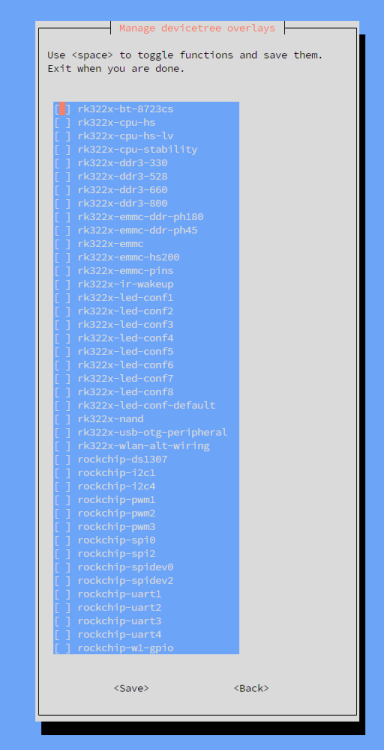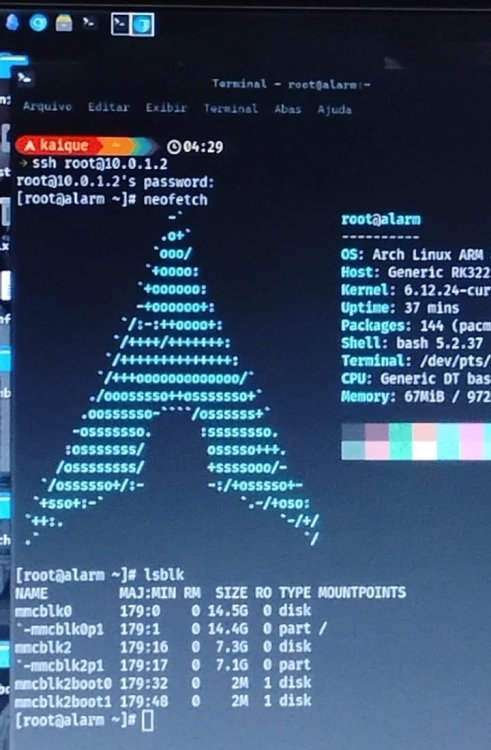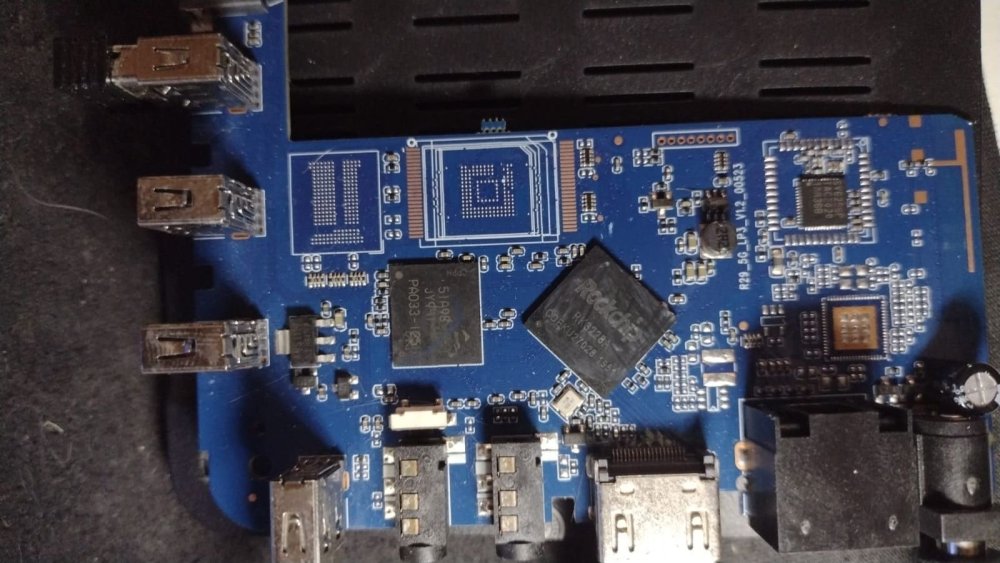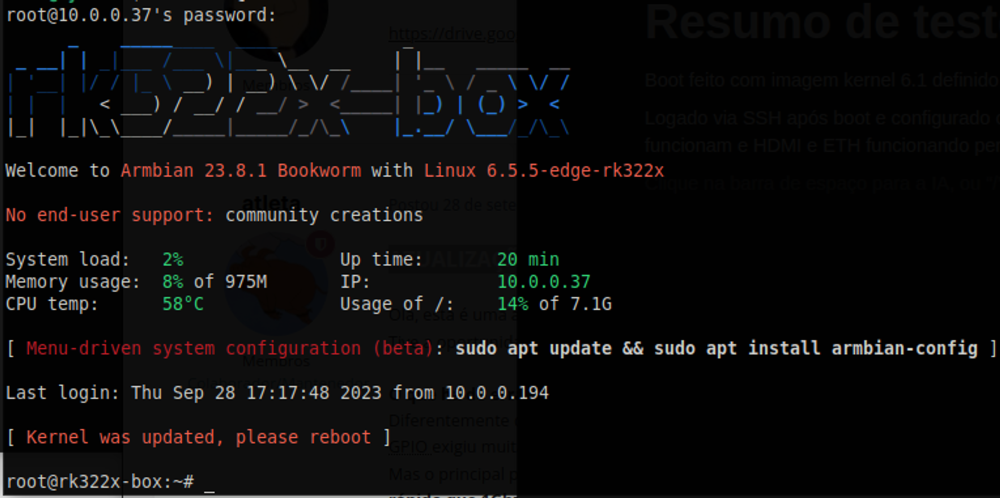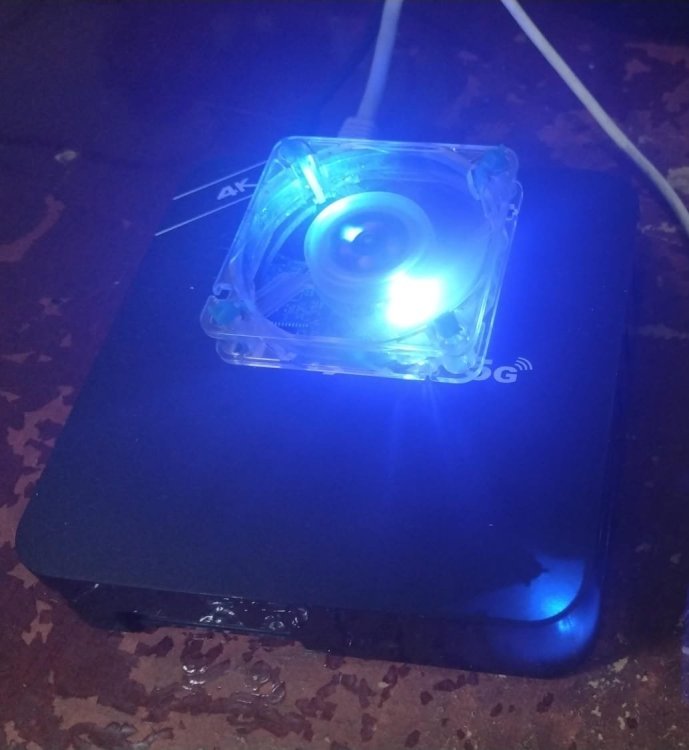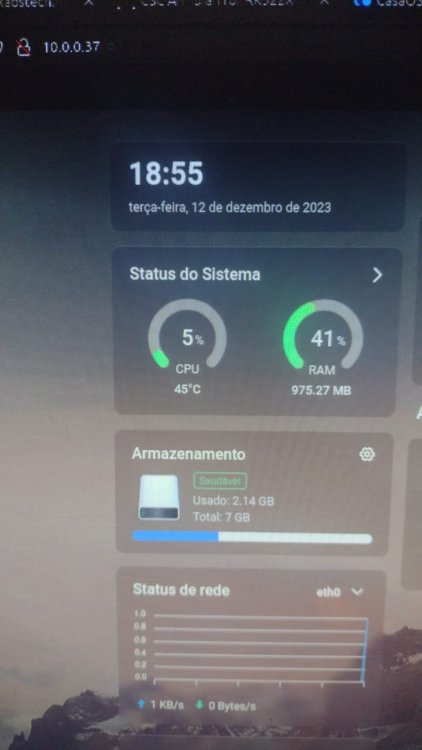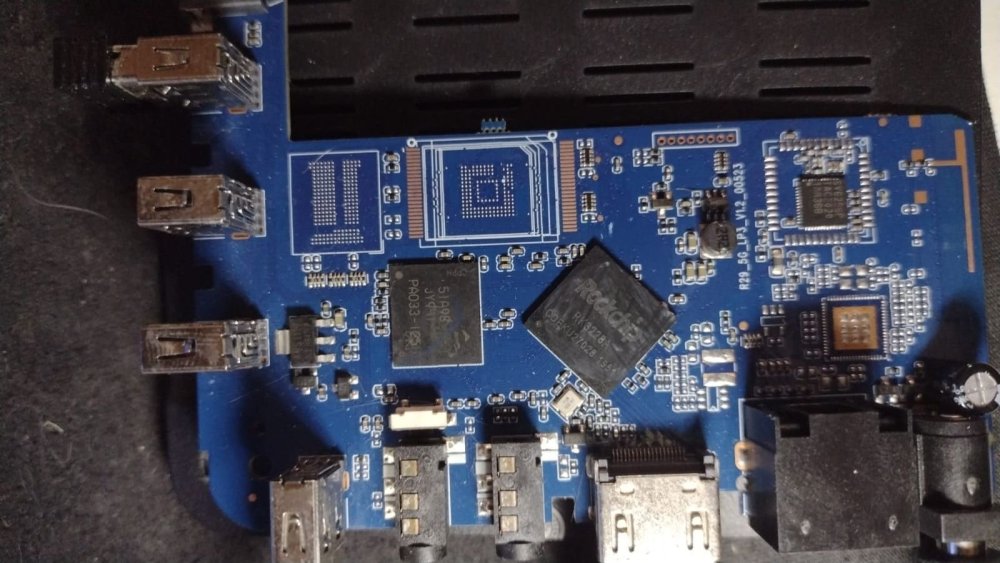-
Posts
13 -
Joined
-
Last visited
Recent Profile Visitors
The recent visitors block is disabled and is not being shown to other users.
-
@Benedito Portela thanks for reply I have another gigabit router that works, but It doesnt have Fiber optics and tnelefone. Idk If this is useful. I contacted my provider because they don't offer access to the router. They said all ports are on automatic and it only works at 100/1000 Mbps. I've tried everything, even changing the TV Box's speed negotiation, but it doesn't support it. The only way that works is to put a device between it and the main router.
-
Good evening, I managed to complete the installation of my R29 without any problems, but it simply isn't recognized by my gigabit router. It works on my other secondary router, but I need it on my main one. I can also connect directly through my Ethernet notebook. I saw that it could be a problem with the router not accepting 10 Mbps, but ethtool says the TV Box is working at 100 Mbps. I don't know what else to try.
-
I went back to the default Armbian rootfs. The Arch rootfs broke the boot, probably due to the use of the latest systemd. It is possible to mitigate this but it is not worth it. Now I am running normally from the sdcard, I just wanted help with the armbian-config options. I know that led-conf7 and uart2 are correct for my board, right? I'm still looking for the others in the thread And what do I have to do to make the wifi work?
-
With this, I will use the box to run a simple file synchronization service. I want to use the internal eMMc, what is the best way to use it?
-
updating so far, i installed arch linux on tv box @RaptorSDS I really want to learn how to do this, where are these pins? What adapter is this? Is this adapter the common one for reading electronic chips? I will love to help you with the information, in return I receive the knowledge Also, eMMC is unstable, I install and configure armbian normally, but when trying to update armbian, every now and then it freezes during the update and after restarting it no longer enters the system. After reporting the system crash here on the forum recently, I found myself on a mission to install a system that I feel comfortable with, Archlinux. With the idea of using the sdcard, with the command dd if=armbian-blabla.img of=device bs=1M oflag=direct status=progress I installed Armbian on the sdcard. With that, I already installed U-Boot and the Armbian boot, I just had to download the armv7 rootfs from archlinuxarm.org I had problems with the root password and file permissions. After copying the arch rootfs to the card, I discovered after trial and error that the files were corrupted. The solution was to redo the entire process. Now the system starts correctly, however, ssh would not start with the boot, and my board is an R29, I do not have HDMI access (and I suspect that not even the USB gadgets work, but I have not tested it yet). The solution was simple. With Armbian on the internal eMMC, I mounted the sdcard along with the dev, proc, sys and run partitions, and in chroot with the sdcard I configured ssh, pacman with pacman-key --init and pacman-key --populate archlinuxarm, and installed sudo to be able to do the basics. In addition, it was necessary to manually configure fstab and copy network settings (to make things easier) from armbian to arch.
-
@atleta I've been seeing that it's a bad idea, it has 8g and I didn't want to completely waste its use, I wanted to help the system's processing or speed in some way but I think it's difficult lol
-
I don't know how to quote messages. @RaptorSDS I've "broken" the box a few times, but I fix it using rkdeveloptool and the maskrom pin on the board. My problem is that I can't use the eMMC correctly, it crashes every time I try to update the box. How do I get the serial log? I have time to help with this R29 board if you need it Now I intend to run Armbian on the SDCARD and use the eMMC as a swapfile and storage for cache and temporary files, is that possible?
-
Att, my board broken after trying to update, idk why but it crashes and system doenst start i have installed the last trunk.
-
Hello again, I commented on the topic over a year ago about my R29. After over a year of not using it, I want to install an internal server to manage some files and even run basic networking and hacking tools. Is it possible to install Archlinux on it? What has changed since 1 year ago? For example, can I now have HDMI and Wi-Fi?
-
@jock I remember selecting exactly in led-conf7, that was more than 1 week ago. Currently I don't have much time, but as soon as I do I will redo the whole process
-
I realized that it's been a few days, anyway, by burning the image using rkdeveloptool after erasing emmc, I successfully booted with Ubuntu using kernel 6.1. I set it up using SSH with everything at default and led-conf7, rebooted and had success with HDMI and ETH. The CPU only exceeded 60ºC during the update, but that was because it was without the case. Edit1: After a complete system update, I ran rk322x-config again and the HDMI and LED stopped working, but that was ok, I decided to use it as a local server and for that I only need the SSH and ETH connection, WIFI would be interesting but it's not a necessity. I am sending you the dmesg, fdisk and journalctl attachment for the board initialization after all this. So I used .dtbo to get led-conf7 working again, but I didn't get to test HDMI. Detail, when the HDMI worked I tried to install LXDE to test the power of the box, it crashed in the middle of the installation and I had to reinstall the entire system, as it was corrupted. Edit2: With the case installed, the card got very hot, so I installed 2 coolers to cool the card, one sending air to the CPU and the other to remove air from inside the case (but I intend to remove the second one). After that, the card doesn't even exceed 50ºC during the benchmark. The objective is to use its useful life to test some applications. I'll wait for system updates to test the HDMI and WIFI again, but like I said it's not really necessary dmesg_k405.txt fdisk_k405.txt journalctl_k405.txt
-
@Bert Kortenbach I understand, the board actually says R29_5G_LP3-v1.2, I'm going to try to connect with the modem to test the SSH connection and see if Armbian is booting. If everything goes well, I'll test the way found in the previous comments. @RaptorSDS I thought the same when I did the first tests 1 week ago. I've had this box for a few months, if I'm not mistaken, almost a year, and as it was sitting in the closet I decided to play around a bit and maybe set up a local server for testing. If it's not too much trouble, I wanted to learn about how to do these low-level tests with the boxes (related to u-boot and the like) and possibly create images as well. Is there a path I should follow or a starting point? And where do I find the images with the latest kernel?
-
Hello, sorry for the grammar, I'm a complete layman and I'm trying to install Armbian on an rk3228a with an eMMC chip. I can access through rkdeveloptool with rkdeveloptool db rk322x_loader_v1.10.238_256.bin and with the multitool, however when installing the Armbian image it simply does not turn on, it has a constant red LED and no video. I've already tried with legacy and current, both don't start, here's a photo of the board. Multitool did not identify whether the chip is NAND so I was not able to install NAND through Multitool to test and I was not even able to get the u-boot-main.bin file to test via rkdeveloptool.



